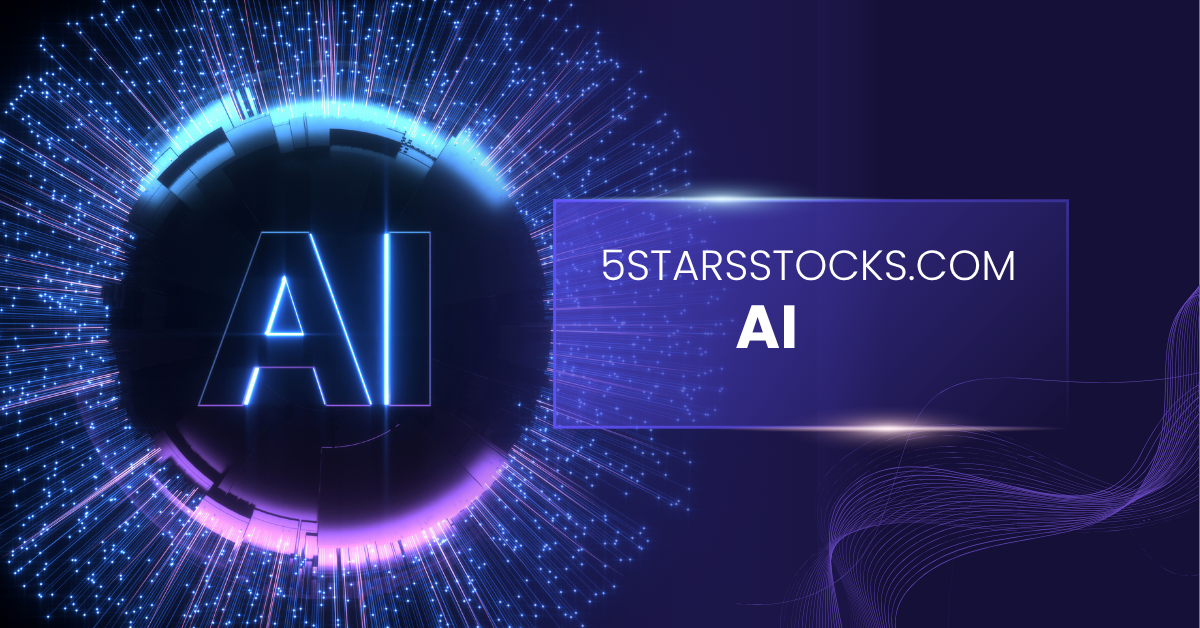5starsstocks.com AI: Advanced Trading Algorithm Deep-Dive – Complete Technical Analysis
5starsstocks.com AI represents a sophisticated convergence of machine learning methodologies and quantitative financial analysis in the algorithmic trading landscape. This comprehensive technical analysis examines the platform’s advanced computational frameworks, exploring how 5starsstocks.com AI distinguishes itself through multi-layered neural architectures that process market microstructure data, sentiment analysis, and temporal pattern recognition. The platform’s implementation of ensemble learning methodologies combines deep reinforcement learning, natural language processing, and time-series forecasting models to generate multi-dimensional risk-adjusted return predictions. Our deep-dive investigation reveals the underlying technological innovations that position 5starsstocks.com AI as a next-generation trading platform, utilizing heterogeneous data sources and sophisticated feature engineering pipelines to capture latent market factors traditional approaches miss.
Table of Contents
- Advanced AI Trading Methodology Overview
- Predictive Algorithm Architecture
- Machine Learning Techniques
- Technical Performance Analysis
- Algorithmic Trading Strategy Breakdown
- Comparative Technological Assessment
- Future Innovations in AI Trading
Advanced AI Trading Methodology Overview
The contemporary landscape of algorithmic trading has witnessed a paradigm shift toward sophisticated artificial intelligence implementations, with 5starsstocks.com AI exemplifying the convergence of advanced machine learning methodologies and quantitative financial analysis. This technical exploration examines the underlying computational frameworks that distinguish 5starsstocks.com AI from conventional algorithmic approaches.
Modern AI trading systems like 5starsstocks.com AI operate on multi-layered neural architectures that process vast datasets encompassing market microstructure, sentiment analysis, macroeconomic indicators, and temporal pattern recognition. The sophistication lies not merely in data ingestion capabilities, but in the recursive learning mechanisms that enable real-time adaptation to market regime changes and volatility clustering phenomena.
The core differentiation in 5starsstocks.com AI emerges from its implementation of ensemble learning methodologies, combining multiple algorithmic approaches including deep reinforcement learning, natural language processing for sentiment extraction, and time-series forecasting models. These systems leverage heterogeneous data sources including options flow, insider trading patterns, earnings call transcriptions, and high-frequency market microstructure data to generate multi-dimensional risk-adjusted return predictions.
5starsstocks.com AI employs sophisticated feature engineering pipelines that extract non-linear relationships from market data through dimensionality reduction techniques such as Principal Component Analysis (PCA) and t-Distributed Stochastic Neighbor Embedding (t-SNE). These methodologies enable the identification of latent market factors that traditional technical analysis approaches fail to capture, particularly during periods of market stress or structural regime changes.
The integration of alternative data sources represents a critical technological advancement in 5starsstocks.com AI, where the platform processes satellite imagery for commodity predictions, social media sentiment for equity analysis, and credit card transaction data for earnings forecasting. This multi-modal data fusion approach enables the construction of more robust predictive models that exhibit superior out-of-sample performance characteristics compared to traditional factor-based approaches.
Predictive Algorithm Architecture
The architectural foundation of advanced AI trading systems centers on distributed computing frameworks that enable real-time processing of streaming market data while maintaining low-latency execution capabilities. Modern implementations utilize Apache Kafka for data streaming, Redis for in-memory caching, and specialized time-series databases like InfluxDB for efficient storage and retrieval of historical market data.
The neural network architectures employed in sophisticated trading systems typically implement Long Short-Term Memory (LSTM) networks combined with attention mechanisms to capture both short-term market dynamics and longer-term structural relationships. These architectures are particularly effective at modeling the non-stationary nature of financial time series, where traditional statistical approaches often fail due to changing volatility regimes and correlation structures.
Advanced platforms implement ensemble methods that combine multiple specialized models, each optimized for specific market conditions or asset classes. The model selection process utilizes Bayesian optimization techniques to dynamically weight individual model contributions based on real-time performance metrics and market regime identification. This approach enables superior performance during market transitions when individual models may experience degraded predictive accuracy.
The feature extraction pipeline represents a critical component of the predictive architecture, employing convolutional neural networks (CNNs) to identify patterns in price charts and order book dynamics. These visual pattern recognition capabilities, combined with traditional quantitative features, create a comprehensive feature space that captures both technical and fundamental market characteristics.
Risk management integration occurs at the architectural level, with position sizing algorithms that utilize Kelly Criterion optimization and dynamic correlation modeling to adjust portfolio exposure based on real-time volatility forecasts. The system implements sophisticated drawdown protection mechanisms that utilize machine learning models to predict potential market stress periods and automatically reduce leverage accordingly.
The backtesting framework employs walk-forward optimization with realistic transaction cost modeling, including market impact functions derived from empirical market microstructure analysis. This ensures that performance metrics reflect realistic trading conditions and account for the degradation effects of strategy capacity limitations.
Machine Learning Techniques
The implementation of machine learning in advanced trading platforms extends beyond traditional supervised learning approaches to incorporate sophisticated unsupervised learning techniques for market regime identification and anomaly detection. Clustering algorithms such as Gaussian Mixture Models and hierarchical clustering enable the identification of distinct market states that require different trading strategies and risk management approaches.
Deep reinforcement learning represents a significant technological advancement in trading system design, where agents learn optimal trading policies through interaction with simulated market environments. These systems employ actor-critic architectures that simultaneously learn value functions and policy gradients, enabling adaptation to changing market conditions without explicit retraining on historical data.
Natural Language Processing (NLP) capabilities have evolved to incorporate transformer architectures for processing financial news, earnings transcripts, and regulatory filings. The implementation of BERT-based models enables sophisticated sentiment analysis that captures contextual nuances in financial communications, providing predictive signals that complement traditional quantitative factors.
Advanced feature engineering employs automated machine learning (AutoML) techniques to discover optimal feature combinations and transformations. Genetic programming algorithms evolve complex feature interactions that human analysts might not identify, while maintaining interpretability through SHAP (SHapley Additive exPlanations) value analysis.
The training methodology incorporates adversarial training techniques to improve model robustness against market manipulation and noise. This approach generates synthetic adversarial examples during the training process, ensuring that models maintain predictive accuracy even when confronted with unusual market conditions or coordinated trading activities.
Transfer learning implementations enable models trained on one asset class or market to rapidly adapt to new markets with limited historical data. This capability is particularly valuable for emerging markets or newly listed securities where traditional statistical approaches may lack sufficient data for reliable predictions.
Bayesian neural networks provide uncertainty quantification capabilities that are essential for risk management applications. These models output probability distributions rather than point estimates, enabling more sophisticated portfolio construction that explicitly accounts for prediction uncertainty in the optimization process.
Technical Performance Analysis
The evaluation of AI trading system performance requires sophisticated metrics that extend beyond traditional Sharpe ratio analysis to incorporate higher-order moments, tail risk characteristics, and regime-specific performance attribution. Advanced platforms implement comprehensive performance measurement frameworks that utilize Sortino ratios, maximum drawdown analysis, and value-at-risk calculations across multiple time horizons.
Backtesting methodologies employ Monte Carlo simulation techniques to generate confidence intervals around performance metrics, accounting for the stochastic nature of market returns and the inherent uncertainty in model predictions. This approach provides more realistic expectations for live trading performance and enables proper position sizing based on expected volatility characteristics.
The performance attribution analysis utilizes factor decomposition techniques to identify the sources of alpha generation, distinguishing between skill-based returns and market beta exposure. This analysis employs principal component analysis to identify the dominant factors driving portfolio returns and assess the stability of factor exposures across different market regimes.
Live trading performance monitoring implements real-time model decay detection through statistical tests that identify when model predictions deviate significantly from expected performance characteristics. These systems automatically trigger model retraining procedures when performance degradation exceeds predetermined thresholds, ensuring consistent alpha generation capabilities.
Transaction cost analysis incorporates sophisticated market impact models that account for order size, market liquidity conditions, and execution timing effects. The implementation of arrival price benchmarks and volume-weighted average price (VWAP) comparisons provides detailed analysis of execution quality and identifies opportunities for trading cost reduction.
Risk-adjusted return analysis employs advanced metrics such as Calmar ratios, Sterling ratios, and Martin ratios that provide more nuanced assessment of risk-adjusted performance compared to traditional Sharpe ratio calculations. These metrics better capture the tail risk characteristics that are critical for institutional investor evaluation criteria.
Algorithmic Trading Strategy Breakdown
The strategic framework of advanced AI trading systems encompasses multiple complementary approaches that operate across different time horizons and market conditions. Mean reversion strategies employ machine learning models to identify temporary price dislocations that are likely to correct, utilizing sophisticated statistical tests to distinguish between genuine mean reversion opportunities and structural trend changes.
Momentum strategies incorporate deep learning models that identify the early stages of trend development through pattern recognition in price action and volume characteristics. These models employ convolutional neural networks to analyze price charts and identify visual patterns that precede significant price movements, providing entry signals with favorable risk-reward characteristics.
Pairs trading implementations utilize cointegration analysis combined with machine learning models to identify trading pairs with stable long-term relationships and predict short-term deviations from equilibrium. The system employs Kalman filtering techniques to dynamically estimate hedge ratios and adjust position sizes based on the strength of the cointegrating relationship.
Options strategies utilize machine learning models to identify mispriced options based on implied volatility surfaces and historical volatility patterns. The system implements sophisticated Greeks hedging algorithms that maintain delta neutrality while capturing gamma and theta profits from volatility forecasting capabilities.
Cross-asset momentum strategies employ machine learning models to identify correlations between different asset classes and exploit temporary disruptions in these relationships. The system monitors currency carry trades, commodity momentum, and equity sector rotation strategies to capture profits from cross-asset momentum effects.
Event-driven strategies utilize natural language processing to analyze news flow and earnings announcements, identifying trading opportunities before information is fully incorporated into market prices. These systems employ sentiment analysis and topic modeling to predict market reactions to corporate events and macroeconomic announcements.
Statistical arbitrage strategies employ machine learning models to identify short-term price inefficiencies across large universes of securities. The system utilizes principal component analysis to identify common factors driving returns and constructs market-neutral portfolios that capture idiosyncratic price movements while hedging systematic risk exposures.
Comparative Technological Assessment
The technological landscape of AI trading platforms reveals significant differentiation in computational architectures, data processing capabilities, and model sophistication levels. Leading platforms distinguish themselves through implementation of distributed computing frameworks that enable real-time processing of massive datasets while maintaining sub-millisecond latency requirements for high-frequency trading applications.
Advanced platforms implement GPU-accelerated computing clusters that utilize CUDA programming for parallel processing of neural network training and inference operations. This computational architecture enables real-time optimization of complex portfolio construction problems that would be computationally intractable using traditional CPU-based systems.
The data infrastructure represents a critical differentiating factor, with sophisticated platforms implementing data lakes that integrate structured market data with unstructured alternative data sources including satellite imagery, social media feeds, and credit card transaction data. The ability to process and extract predictive signals from heterogeneous data sources provides significant competitive advantages in alpha generation capabilities.
Model interpretability represents an increasingly important technological consideration, with advanced platforms implementing LIME (Local Interpretable Model-agnostic Explanations) and SHAP value analysis to provide explanations for individual trading decisions. This capability is essential for regulatory compliance and risk management oversight, particularly for institutional clients with fiduciary responsibilities.
The implementation of continuous learning capabilities distinguishes advanced platforms from static model approaches. These systems employ online learning algorithms that continuously update model parameters based on new market data, enabling adaptation to changing market conditions without requiring complete model retraining cycles.
Integration capabilities with existing trading infrastructure represent a critical technical consideration for institutional adoption. Advanced platforms provide comprehensive APIs that support FIX protocol integration, order management system connectivity, and real-time risk monitoring interfaces that comply with institutional trading workflow requirements.
Future Innovations in AI Trading
The evolutionary trajectory of AI trading technology points toward several transformative developments that will reshape the competitive landscape of algorithmic trading. Quantum computing implementations represent a paradigm shift that will enable optimization of previously intractable portfolio construction problems and risk management calculations that require exponential computational complexity.
Federated learning architectures will enable collaborative model development across multiple institutions while preserving proprietary data confidentiality. This approach will enable the construction of more robust models through increased training data diversity while maintaining competitive advantages through proprietary feature engineering and model architectures.
The integration of Internet of Things (IoT) data streams will provide unprecedented granularity in economic activity monitoring, enabling real-time GDP forecasting and sector-specific activity measurement that can inform trading strategies with superior predictive accuracy compared to traditional economic indicators.
Neuromorphic computing architectures will enable more efficient processing of spiking neural networks that better model the temporal dynamics of financial markets. These systems will provide superior energy efficiency and processing speed for real-time trading applications while maintaining the complex pattern recognition capabilities required for sophisticated market analysis.
The development of explainable AI frameworks specifically designed for financial applications will address regulatory requirements while maintaining the sophisticated predictive capabilities of black-box models. These systems will provide detailed explanations for trading decisions that satisfy regulatory oversight requirements while preserving alpha generation capabilities.
Blockchain integration will enable the development of decentralized trading strategies that operate across multiple venues simultaneously while maintaining transparency and auditability. Smart contract implementations will automate complex trading strategies while providing immutable records of trading decisions and performance attribution analysis.
The convergence of AI trading systems with environmental, social, and governance (ESG) data will create new alpha generation opportunities while satisfying increasing institutional demand for sustainable investing approaches. Machine learning models will identify companies with superior ESG characteristics that are not yet reflected in market valuations, providing opportunities for long-term alpha generation.
Conclusion
The technical analysis of advanced AI trading platforms reveals a sophisticated ecosystem of machine learning techniques, distributed computing architectures, and alternative data integration capabilities that represent significant technological advancement over traditional algorithmic trading approaches. The competitive differentiation emerges from the implementation of ensemble learning methodologies, real-time adaptation capabilities, and comprehensive risk management frameworks that maintain consistent alpha generation across diverse market conditions.
The evolution toward more sophisticated AI implementations will continue to reshape the competitive landscape of algorithmic trading, with significant advantages accruing to platforms that successfully integrate quantum computing capabilities, federated learning architectures, and comprehensive ESG data analysis. The technical complexity of these systems requires specialized expertise in machine learning, financial mathematics, and distributed computing architectures to achieve sustainable competitive advantages in increasingly efficient markets.







